EMOS B9664 Handleiding
EMOS
Niet gecategoriseerd
B9664
Bekijk gratis de handleiding van EMOS B9664 (32 pagina’s), behorend tot de categorie Niet gecategoriseerd. Deze gids werd als nuttig beoordeeld door 39 mensen en kreeg gemiddeld 4.6 sterren uit 20 reviews. Heb je een vraag over EMOS B9664 of wil je andere gebruikers van dit product iets vragen? Stel een vraag
Pagina 1/32

1201001800_31-B9664_00_01 148 × 210 mm zdroj: 1201000100_31-B9641_00_01
www.emos.eu
GB Instruction Manual
CZ Návod k použití
SK Návod na použitie
PL Instrukcja użytkowania
HU Használati útmutató
SI Navodila za uporabo
RS|HR|BA|ME Priručnik za uporabu
DE Gebrauchsanweisung
UA Інструкція по застосуванню
RO|MD Manual de utilizare
LT Naudojimo instrukcija
LV Lietošanas rokasgrāmata
EE Kasutusjuhend
BG Ръководство за експлоатация

2
GB | Instruction Manual
Maintenance-free back-up (stationary) accumulator, type:
AGM (VRLA design: valve-regulated lead-acid battery with
absorbed electrolyte – suitable for alarms, UPS, auxiliary
power units, emergency lighting, telecommunication, etc.)
This manual describes how to put the individual types of
batteries (accumulators) into operation and also describes their
maintenance, safe handling, storage and disposal.
Important warnings:
• Every battery (cell, accumulator) is a chemical power
source containing solid or liquid chemical compounds
(corrosive substances) that may damage health, property
or the environment. Handle batteries with caution.
• When ready for use, the accumulator is capable of supplying
electrical current at any time, even under undesirable cir-
cumstances! Even if the battery is only partially charged,
interconnecting both contacts (terminals) with a conductive
material (e.g. by careless handling, transport, storage etc.)
will result in an uncontrolled release of a large amount of
electrical energy, i.e. a SHORT CIRCUIT. At best, this will only
damage the battery. It worst, if the short circuit is long-term
(but even a few seconds are enough), it may cause re or
even an explosion, resulting in property or environmental
damage, injury and potentially loss of life! Always handle
batteries in a way that prevents short circuits!
• Used batteries or old unused batteries, functional and
non-functional batteries and cells automatically become
hazardous waste once depleted. Improper disposal may
seriously endanger the environment! In the vast majority of
cases, batteries contain hazardous chemical elements or
compounds: lead, cadmium, mercury, electrolyte (H2SO4)
and other poisonous substances harmful to human health.
Improper storage may release these substances into the
environment and cause contamination. Please do not dis-
pose of depleted batteries and cells as communal waste!
We will take back any used accumulators or cells FREE
OF CHARGE from you and ensure their proper recycling or
disposal. In accordance with the Waste Act, every munici-
pality is obligated to arrange the establishment of collection
points where citizens can bring hazardous components of
communal waste. You can also bring in used batteries and
cells to shops that sell new ones.
• Individual accumulator types greatly dier from one ano-
ther. When changing an old battery for a new one, it is
necessary to follow the instructions of the manufacturer
of the device (auxiliary power unit – UPS etc.) which state
which type of accumulator is suitable for the appliance in
question. Installing an unsuitable type of battery can cau-
se irreversible damage to the device. Such cases are not
covered by the warranty on the part of the supplier of the
replacement battery, nor on the part of the manufacturer
of the appliance.
a) Description
As the name suggests, VRLA batteries (valve-regulated
lead-acid batteries) regulate the release of gas by a valve. In
practice, this means that there is almost no leakage of aerosols
from the H2SO4 electrolyte. The valve prevents gas leakage
and can handle overpressure of up to 0.43 kPa. The battery
is based on lead and electrolyte bound in glass microbres
(so-called AGM – absorbent glass mat) or, more rarely, in gel
(containing electrolyte thickened by thixotropic gel – SiO2).
AGM back-up batteries are commonly used in devices such as
UPS, electrical re alarm systems, electrical security systems,
emergency lighting, telecommunication, but also as a power
source for electric motors (scooters, children‘s toys and many
other appliances).
b) Maintenance, Storage and Handling
AGM-type stationary batteries are fully maintenance-free.
However, basic rules have to be followed during their use to
prevent shortening of their service life. Operating conditions
are very important, particularly ambient temperature. Optimal
operating temperature provided by the manufacturer is 20 to
25 °C. Exceeding these values long-term or frequently will
dramatically shorten the service life of the battery. Extremely
high operating temperatures may even result in irreversible
damage. If the battery is subjected to long-term exposure to
operating temperatures above 40 °C, all chemical processes
are accelerated, resulting in increased release of gas and thus
increased pressure inside the cell. In such circumstances, the
valves can no longer regulate the pressure and the accumula-
ting gas is not released at a sucient pace. The accumulator
heats up and the plastic casing deforms and increases in volume
(literally inates). The service life of AGM batteries as stated
by manufacturers, provided optimal operating conditions are
observed, is between 4 to 12 years depending on model. AGM
technology is very eective in reducing self-discharge. While
classic ooded batteries self-discharge at a rate of approxi-
mately 1 % of their capacity a day, AGM batteries discharge
approximately 1–3 % a month (i.e. a maximum of 0.1 % a day)!
This naturally increases their shelf life. Handling and operation
of back-up batteries only requires following basic principles
of battery use. The battery can be operated in any position.
However, operating the battery in upside down position is the
least suitable and is not recommended. The battery must not be
stored or operated in the vicinity of open ame. Fall from height
or heavy blows can cause irreversible mechanical damage.
The terminals of the battery must not be interconnected with
one another during operation, handling or storage to prevent
short circuits. A short circuit may damage the battery, cause
a re or an explosion, resulting in injury or even death. If the
casing of the battery sustains mechanical damage, electrolyte
(corrosive substance) may leak out of the battery and come
into contact with the skin. Immediately wash any aected skin
areas with water and neutralise with soap or soda. In the event
of more extensive contact or acid burns, seek medical attention
as soon as possible.
c) Charging
Before beginning the charging process, check the rated voltage
of your battery. The battery must be charged by a suitable
power source or charger with charging voltage of 14.4 V for 12
V accumulators and 7.2 V for 6 V accumulators. If the charger
or power source does not meet these parameters, the battery
will not be charged fully, which will result in its quick depletion
and, in extreme cases, destruction. Complaints regarding these
negative eects will not be accepted. Also check that your
charger is suitable for charging the given type of accumulator
(AGM, GEL) and has the correct rated voltage. Last but not
least, check that the charger is suciently powerful to charge
your accumulator or that it is not too powerful and thus also
unsuitable, since its charging current is too high.
Charging accumulators is not dicult. Here are simple guideli-
nes to follow. If you are still unsure after these instructions, it
is always best to consult a professional ahead of time or have
them charge the accumulator for you. You can also use the
manual that came with the charger.

3
Some sections of article c) describe situations that are irrele-
vant to users of automatic chargers. These chapters are marked
with an asterisk *.
• Accumulator type – we will be describing the charging of
AGM or GEL maintenance-free accumulators.
• Correct voltage – make sure your charger is set to the
correct rated charging voltage. Charging voltage must be
14.4 V for 12 V batteries and 7.2 V for 6 V batteries. Some
chargers do not have a switch. In that case, simply check
whether the data on both components matches (e.g. 12 V
charger and 12 V batteries).
• Correct polarity – before starting the charger, check that
the poles on the battery and the terminals on the charger
cables match, i.e. connect the negative terminal to the
negative pole and positive terminal to the positive pole.
Otherwise you risk a short circuit.
• Ventilation – check that the ventilation (valve vents on the
battery lid on top or on the side) is clean and unobstructed
and that gases can freely release from the battery if nee-
ded. If the vents are clogged or covered, there is a risk of
accumulation of gases inside the battery, causing potential
irreversible damage. Some batteries do not feature vents
or the vents are hidden.
• Setting an automatic charger – if the charger features
multiple setting options, follow the instructions provided
by the manufacturer of the charger. Usually the charger
allows setting charging voltage and current. You will nd
instructions on the required charging current in the next
paragraph. If the charger has no settings, start it up by
plugging the power cable into a 220 V (230 V) mains socket;
the cables with terminals should already be connected to
the battery poles at this point.
• Charging current* – general rule of thumb: charge with
current equal to one tenth (1/10) of battery capacity. Expre-
ssed numerically, if you have a 60 Ah accumulator, charge
it at 6 A (60 : 10 = 6 A). There is a more accurate charging
formula that states that the charging current should equal
0.12 times the accumulator capacity. I.e. I = 0.12 × C. In
practice, if you have a 60 Ah accumulator, then 60 × 0.12
= 7.2 A charging current.
These days, most users have automatic chargers. In that
case, simply choose a suitable charger with sucient
current. Take into account, however, that charge time is
directly proportional to charging current. Charging should
not take unnecessarily long (1 A charging current is too
little for a 60 Ah battery, for instance). Vice versa, do not
choose a charger that is too powerful, so that charging
isn‘t unnecessarily fast. Such charging is harmful to the
accumulator in the long term (e.g. charging current over
14 A is too high for a 60 Ah battery).
Note: if your charger allows adjusting the charging current,
charge according to formula I = 0.12 × C up until you reach
voltage of 14.2 V; then, reduce the current to half and con-
tinue until charging is complete (voltage will reach 14.4 V).
• Signs of full charging* – in general, a battery should
be recharged to full charge. Maintenance-free batteries
without caps or AGM batteries with absorbed electrolyte
no longer allow measuring energy density; do not under
any circumstances attempt to break into the battery! The
state of charge of a 12 V maintenance-free AGM or GEL
type lead-acid battery, charged in a standard way with a
manual charger, can be estimated by measuring voltage
on the poles during charging. The values can be interpreted
as follows: 14.3 V = 90 to 95 % charge, 14.4 to 14.5 V =
100 % charge.
WARNING – make sure to correctly set the measured
quantity on the measuring device to voltage [V].
• Quick charging* – In exceptional cases where quick charging
is necessary, it is possible to use a charging current of I = 1 ×
C (in our example of a 60 Ah battery, charging current would
be 60 A). However, only charge this way for a maximum
of 30 minutes! Keep in mind that the more frequently you
use higher charging currents to recharge your battery, the
shorter you can expect the service life of the battery to be.
• Accumulator capacity – the current capacity (state of
charge) of the accumulator can be determined using simple
measuring devices. You can use both devices for approxima-
te measurement without putting a load on the accumulator
and more precise devices that measure internal resistance.
However, precisely determining the service life of the
accumulator requires a complex diagnostic process using
an expensive testing device that discharges and recharges
the accumulator. Such diagnostic can take several hours
for smaller batteries and several days for larger batteries.
It is recommended to do any testing to determine battery
capacity only with a fully charged accumulator and with at
least 4 hour gap since last charging. Approximate measu-
rement of capacity can be done using a simple measuring
device called a voltmeter. Measure without load, i.e. only
measure voltage without current drain. Compare the mea-
sured values with the following table (note: the results of
measurement may be misrepresentative or completely
incorrect for damaged batteries or older batteries that have
been used for a long time; such batteries can be identied
and tested only using more complex methods):
State of charge Measured voltage
100 % 12.90+ V
75 % 12.60 V
50 % 12.40 V
25 % 12.10 V
0 % 11.90 V
• Deep discharge – if you discharge the accumulator com-
pletely and leave it in this state for several days, you will
reach a state of so-called deep discharge; measured volt-
age at zero load will drop under 11 V and a process called
sulphation will begin inside the cells. The sulphur originally
contained in the electrolyte will „seep“ into the active
material of the lead plates due to discharging. Recharging
would once again „dislodge“ and mix the sulphur with the
diluted, watery electrolyte, increasing the concentration of
the acid. But when not recharged, the sulphur reacts with
the lead, resulting in further oxidation and the active lead
material turns into lead sulphide, also known as sulphate.
In advanced stages, the process is irreversible and the
accumulator is permanently damaged. If the accumulator
reaches a state of deep discharge, it is often no longer
rechargeable using a standard automatic charger. These
chargers are usually either unable to detect the voltage in
the discharged battery and will not start charging at all, or
they start charging but are unable to overcome the internal
resistance of the sulphated accumulator and overheat.
To try to restore the accumulator, bring it to a professional
service centre. Deeply discharged accumulators that have
become damaged in this way are not covered by the wa-
rranty.
Product specificaties
| Merk: | EMOS |
| Categorie: | Niet gecategoriseerd |
| Model: | B9664 |
Heb je hulp nodig?
Als je hulp nodig hebt met EMOS B9664 stel dan hieronder een vraag en andere gebruikers zullen je antwoorden
Handleiding Niet gecategoriseerd EMOS
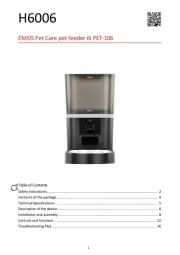
1 Juli 2025
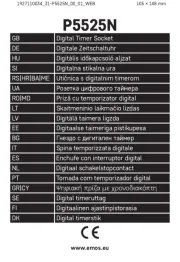
30 Juni 2025
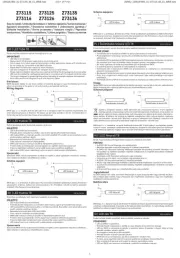
16 Juni 2025
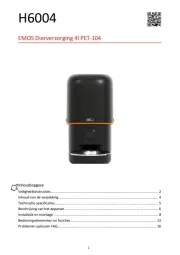
16 Juni 2025
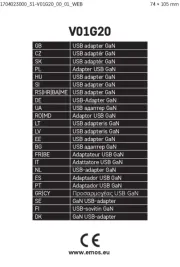
16 Juni 2025
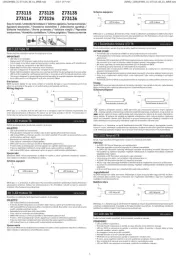
15 Juni 2025
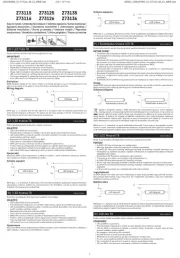
15 Juni 2025
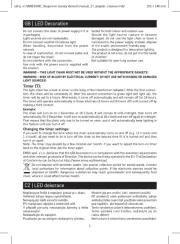
9 Juni 2025
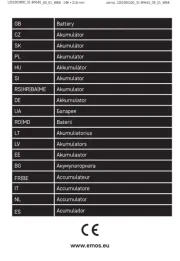
8 Juni 2025
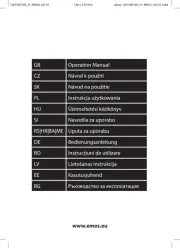
8 Juni 2025
Handleiding Niet gecategoriseerd
- Valueline
- SVS
- Oral-B
- Creality
- Doomoo
- Pro-Ject
- Rittal
- Hecate
- Beha-Amprobe
- Catalyst
- Vulcan
- PoolSkim
- Focusrite
- Stadler Form
- Hypnos
Nieuwste handleidingen voor Niet gecategoriseerd

1 Augustus 2025
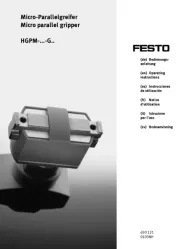
1 Augustus 2025
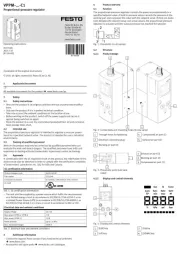
1 Augustus 2025
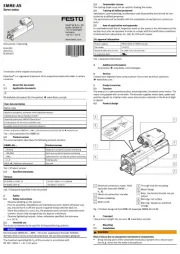
1 Augustus 2025
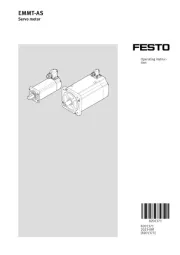
1 Augustus 2025
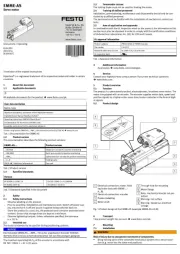
1 Augustus 2025
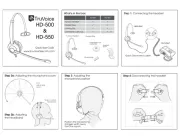
1 Augustus 2025
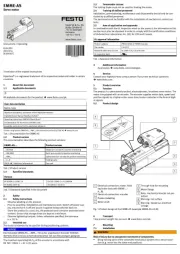
1 Augustus 2025

1 Augustus 2025
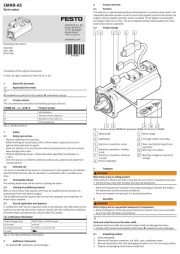
1 Augustus 2025